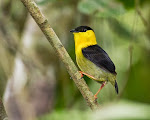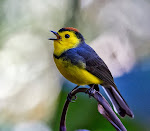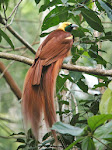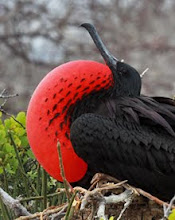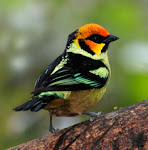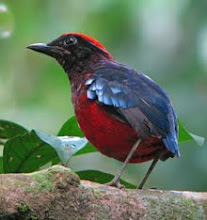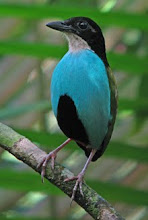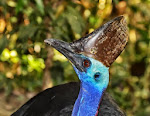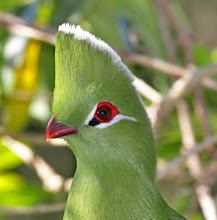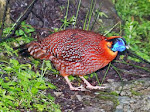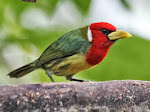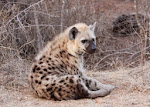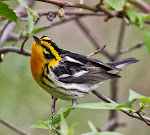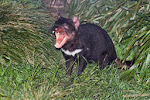Andrew Spencer, Cameron Cox, and I spent a couple of days in the dry tropical forest of Santa Rosa National Park in the Pacific Northwest. It was my first visit to this site, and I was very impressed with it. Santa Rosa is Costa Rica's oldest national park, established in the year I was born, 1971. This is the biggest stand of tropical dry forest I had been in within Costa Rica.
We had come here as we were keen to see, and photograph, the Elegant Trogon Trogon elegans in particular, which many, like me, have seen previously in Arizona in the US. However, the form that occurs in Santa Rosa (which is the southernmost population of the species) differs in the colour of the uppertail, which lacks the coppery coloration they they show in North America. The evening before when we arrived at the park, we had not a sniff of an Elegant Trogon, but how different a few dawns on site proved to be, with half a dozen or more seen and heard. As well as Elegant Trogons, which were a joy to see all over again, other trogons were in evidence too; arguably the easiest of all 9 trogon species in Costa Rica: Black-headed Trogon Trogon melanocephalus. While writing this blog I thought enough was enough, and I should finally din out what "TROGON" means, and it turns out it means to gnaw or nibble.
After picking up our first handful of Elegants on our first morning, a lifebird decided to walk out on to the road in front of the car: THICKET TINAMOU Crypturellus cinnamomeus, and by the end of a couple of days there we had bagged a trio of these handsome tinamous. A number of other local Costa Rican species also occur at Santa Rosa, and we were keen to track these down too; Banded Wren Thryophilus pleurostictus was less abundant than we expected, but some great views were had during the cooler post-dawn hours of the day. Indeed, it was so hot while we were there that activity was very concentrated, with the best in the precious few post-dawn hours, when birds like Banded Wrens were only encountered during this time. So if you were planning to go to this fantastic park in Guanacaste, I would make sure you plan your main birding sessions from dawn, as if you searched for some species like Elegant Trogon and Banded Wren any later than that you may feel they are extremely difficult, which is not the case in these key hours only. Another local species which we managed to track down was the Ivory-billed Woodcreeper Xiphorhynchus flavigaster, which was hanging around another pair of Elegant Trogons.
Aside from these birds we saw a number of species typical of this Pacific-slope woodland in northern Costa Rica: Cinnamon Hummingbird Amazilia rutila, Plain-capped Starthroat Heliomaster constantii, Stripe-headed Sparrow Peucaea ruficauda, White-lored Gnatcatcher Polioptila albiloris, Scrub Euphonia Euphonia affinis, and Yellow-naped Parrot Amazona auropalliata and White-fronted Parrots Amazona albifrons. Of course no visit to this habitat would be complete without an encounter with one of the most conspicuous birds of this region, the comical White-throated Magpie-Jay Calocitta formosa. We saw plenty of these birds, which roam the woods in small parties and often genuinely seem to curious, often flying straight up to check us out, with absolutely no encouragement from us.
One of my favourite birds of this habitat was saved until last when I finally managed to hear, and track down a Lesser Ground-Cuckoo Morococcyx erythropygus, complete with it's splendid bright blue "eyeshadow". My attempts to photograph this bird were thwarted though by the burning late afternoon sun doing its best to burn out all of my efforts. Little did I know though, this minor frustration was to be rectified just the next day, when we visited Rincon de Vieja...






























